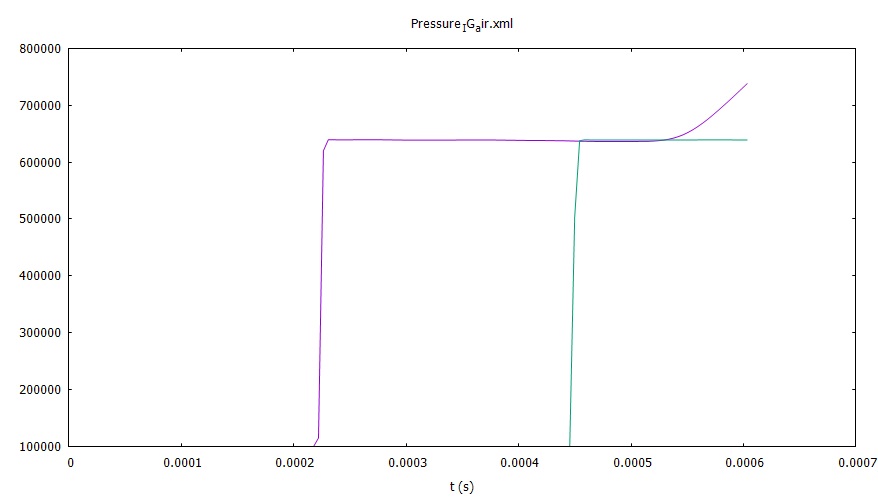High-pressure left
This is a classical single-phase shock tube filled with air. The test is available in the folder ./libTests/referenceTestCases/euler/1D/shockTubes/HPLeft/. The corresponding uncommented line in ECOGEN.xml is:
<testCase>./libTests/referenceTestCases/euler/1D/shockTubes/HPLeft/</testCase>

Fig. 40 Initial condition for single-phase shock tube.
The initial characteristics of the run are:
Characteristic |
Value |
|---|---|
dimension |
1 m |
initial mesh size |
100 |
AMR max level |
3 |
diaphragm position |
0.4 m |
boundary conditions |
non-reflecting |
final solution time |
0.6 ms |
solution printing frequency |
0.06 ms |
precision |
2nd order (VanLeer) |
Solution of this Riemann problem induces 3 waves:
expansion waves propagating in high-pressure chamber,
a right-facing shock wave propagating in low-pressure chamber,
a contact discontinuity.
These waves are clearly observable on the results:

Fig. 41 Shock tube filled with air. Visualization using Paraview software.
This test is also equipped with 3 Eulerian sensors. For example, two sensors are positioned at \(x = 0.6 m\) and \(x= 0.8 m\). They record the following pressures:

Fig. 42 Pressure recorded by sensors at \(x = 0.6 m\) (pink) and \(x = 0.8 m\) (green). Visualization using gnuplot software.
The first sensor sees its pressure rising first because of the shock wave. Because this Riemann problem generates a supersonic flow after the shock wave, the tail of the expansion waves is seen by the sensor after 0.5 ms.